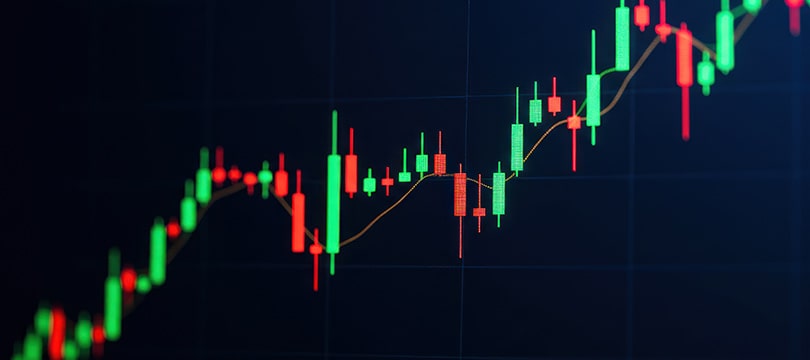21st Century Trading is dominated by high-frequency algorithms, tools that operate automatically at speeds imperceptible to the human eye.
These tools make unorthodox but tremendously effective strategies possible. Among these, there is one that raises particular concern due to its manipulative nature and the negative effects it can generate on less equipped traders:
spoofing.
We'll discuss it here: we'll explain what it is, how to recognize it, and how to defend against it.
What is Spoofing?
Spoofing is a market manipulation practice that is both sophisticated and crude. Sophisticated because it relies on high-frequency algorithms. Crude because it's based on a trick as old as time: making others believe something untrue to mislead them.
Specifically, spoofing consists of placing fictitious orders with the intent to influence the price of a financial instrument, without actually having the intention to execute them.
The goal is to
deceive other operators about the real market direction, inducing them to make decisions based on falsified signals.
This strategy is generally used by high-frequency trading (HFT) algorithms, which can enter and cancel orders within a few milliseconds.
But let's give a concrete example.
Suppose a trader wants to buy EUR/USD at 1.0840. To push the price down and get a better price, they place large sell orders just above the current price, for example at 1.0845, 1.0846, and 1.0847,
creating the illusion of imminent downward pressure. Other traders, seeing this wave of selling, start selling,
actually pushing the price down.
As soon as the price reaches 1.0840, the trader quickly cancels the fictitious orders and buys. The goal has been achieved: they have artificially influenced the market to enter a position at a more favorable price.
Spoofing is illegal in many countries. In the States, it is explicitly prohibited by the Dodd-Frank Act. Nevertheless, it remains a current problem as detection and prevention are still complex today.
How to Recognize Spoofing
Identifying spoofing in real-time is difficult, but... Not impossible. Even though the algorithms used are extremely fast and sophisticated, there are
some recurring signals that may suggest ongoing manipulation. Here are three operational clues to consider.
- Large orders that suddenly disappear. One of the most obvious signs of spoofing is the sudden appearance of large orders, which are canceled just before being executed. If you notice anomalous orders on the book that last a few seconds and disappear as soon as the price approaches, you might be facing a spoofing attempt.
- Persistent and inconsistent imbalance between the bid and ask sides. When you notice a strong imbalance in the book – for example, a mass of sell orders that seems to suggest an imminent collapse, but without being accompanied by consistent volumes in the trade flow, there may be an artificial distortion, outright spoofing. Spoofers, in fact, inflate one side of the book to alter the perception of supply and demand.
- Price reacting anomalously to order removal. If the price changes direction sharply and suddenly not after execution, but simply after the cancellation of orders on the book, it could be a case of spoofing. It means that the market is moving in response to an illusion of pressure, not real volumes.
How to Defend Against Spoofing
Spoofing is not simply an unfair technique: it is a real threat to retail traders, who operate with less sophisticated tools and at speeds significantly slower than algorithms. A threat that leads to dire consequences:
- Entries at worsened prices, caused by false signals.
- Prematurely triggered stop losses, because the price is momentarily pushed in a false direction.
- Hasty decisions, influenced by apparent market pressure that is actually non-existent.
But there's good news: defending yourself is possible. Of course, it requires awareness, technical preparation, and, above all, the ability to read the market with a critical eye. Here are three effective defensive approaches.
Order Flow Analysis
Order flow is an essential tool for those who want to defend against spoofing. It involves analyzing execution dynamics and order behavior in the book to detect anomalies that traditional charts miss.
For example, if you see orders being placed and withdrawn without generating trades, or if you notice that the actual traded volume is much lower than the visible volume on the book, a spoofing attempt may be underway.
Entry Strategies Based on Multi-Level Confirmations
In the presence of potential spoofing, a single signal on the book is not enough to enter a position. It's better to
wait for confirmations from multiple sources: for example, combining book analysis with actual traded volume analysis, or waiting for a breakout with real follow-through, not just apparent.
This approach slightly slows down entry, but significantly reduces the risk of being "hooked" by fictitious moves.
Avoid Over-Exposure During Critical Hours or on Ultra-Liquid Instruments
Many spoofing incidents occur during times of high volatility, such as during the release of macroeconomic data or in the first hours of the American session. Others occur on instruments with very deep books, where it's easier to hide large fictitious orders.
The advice is therefore to
reduce exposure at these times, or at least act with extreme caution. This can make the difference between a defensible position and a trade that falls victim to manipulation.




